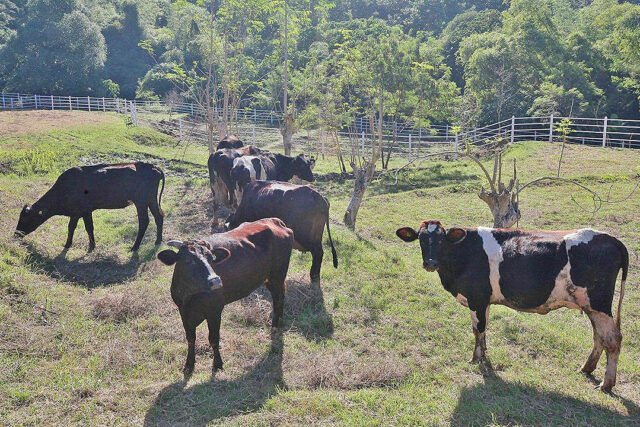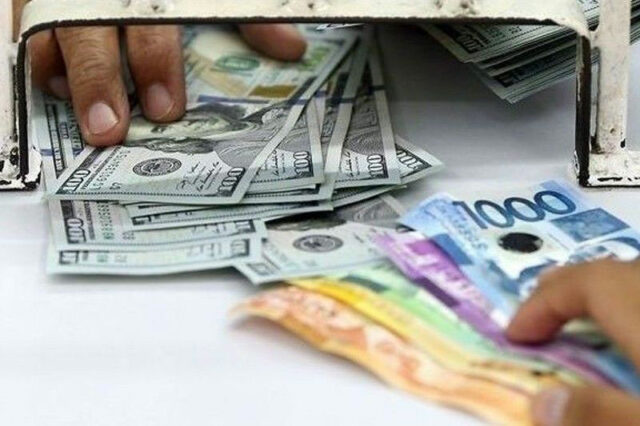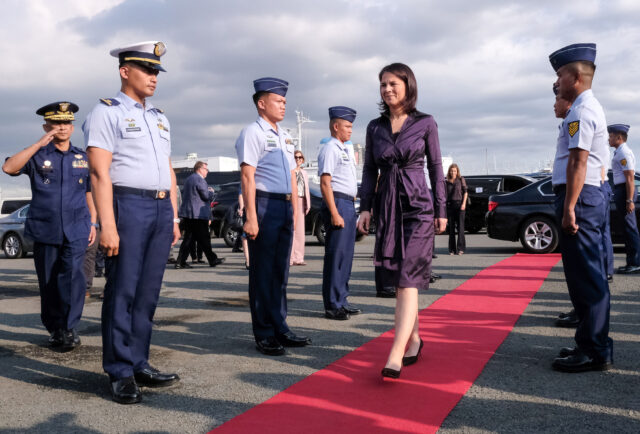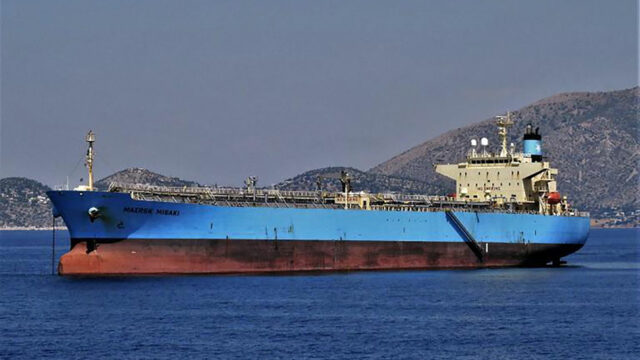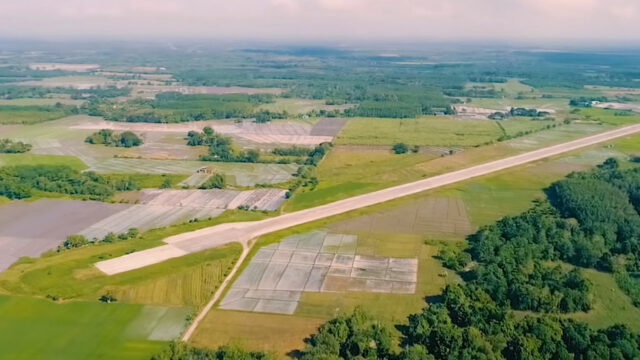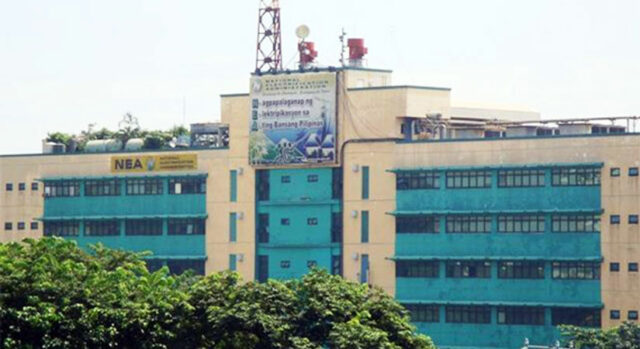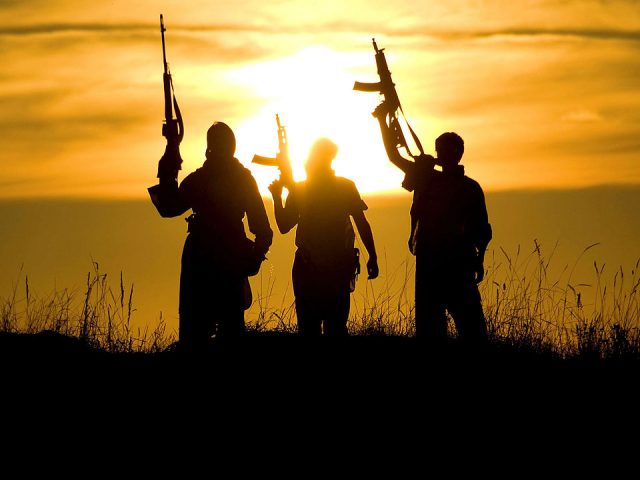By John Victor D. Ordoñez and Kyle Aristophere T. Atienza, Reporters
THE PHILIPPINES and Germany have agreed to boost maritime cooperation in the South China Sea and ensure international law is upheld amid tensions with China, according to their top envoys.
“It is important to set up mechanisms and we plan on cooperating with the Philippines and the Association of South Asian Nations (ASEAN) to solve tensions in a peaceful way,” German Foreign Minister Annalena Charlotte A. Baerbock told a news briefing in German after meeting with Philippine Foreign Affairs Secretary Enrique A. Manalo on Thursday.
“We want to be clear that freedom of navigation is essential to international trade, and it is important that we take a very clear stance on exclusive economic zones for each and every country,” she added.
Ms. Baerbock was also set to visit the Philippine Coast Guard to discuss potential joint maritime training programs.
In June last year, German Defense Minister Boris Pistorius told a security conference Germany would send a frigate to the Indo-Pacific region this year to ensure a “rules-based international order” is observed in the Mediterranean Sea, Bay of Bengal and the South China Sea.
A German warship had sailed in the South China Sea for the first time in almost 20 years over alarms of China’s territorial expansion in the waterway.
“We discussed enhancing defense cooperation and support of Germany for capacity-building in the Philippine Coast Guard,” Mr. Manalo said. “Emphasizing the importance of rules-based security, Minister Baerbock and I reaffirmed our shared commitment to championing the rules-based international world.”
On Tuesday, Indonesian Minister for Foreign Affairs Retno L.P. Marsudi said Indonesia is ready to work with the Philippines and other ASEAN states to finalize a code of conduct for the South China Sea.
Philippine President Ferdinand R. Marcos, Jr. earlier said he had approached neighbors such as Malaysia and Vietnam to discuss crafting a code of conduct, citing limited progress on a broader regional pact with China.
“China speaks positively of the progress made in the consultations on the code of conduct in the South China Sea, and hopes that all parties will maintain firm confidence, steer clear of disruptions… so as to build the South China Sea into a sea of peace, friendship and cooperation,” the Chinese Embassy in Manila told BusinessWorld in a Viber message on Tuesday.
A United Nations-backed tribunal in 2016 said China’s claim to nearly the entire South China Sea has no legal basis, but Beijing has largely ignored the ruling and continued its island building activities.
Meanwhile, political analysts said the Association of Southeast Asian Nations’ (ASEAN) Dec. 30 statement urging a peaceful resolution of sea disputes raises expectations for the regional bloc to address rising tensions in the South China Sea.
While the ASEAN Foreign ministers did not name China or the Philippines, “it is the first standalone statement that ASEAN has issued regarding tensions in the South China Sea,” Aushaz Irfan, an intelligence analyst at United Kingdom-based risk management firm Healix said in an e-mail.
“In the last few years, ASEAN has increasingly attracted criticism for its perceived failure to respond to rising tensions in the South China Sea,” he said. “In that sense, despite not specifically naming any of the involved parties, it is more than what ASEAN has done in response to previous incidents in the South China Sea, which makes the statement significant and unprecedented.”
“Notably, this statement can set a precedent, raising the expectation for ASEAN to respond to similar incidents in the South China Sea in the future,” he added.
The ASEAN earlier said disputes in the South China should be resolved “without resorting to the threat or use of force” and according to international law including the 1982 United Nations Convention on the Law of the Sea (UNCLOS).
‘LITTLE WEIGHT’
“We reiterate the importance of peaceful dialogue that contributes constructively to the promotion of regional stability and cooperation in the maritime domain,” it said. It also welcomed the recent maritime dialogue between China and the United States in Beijing and the meeting between US President Joseph R. Biden and Chinese President Xi Jinping on the margins of the APEC Leaders’ Meeting in California.
Tensions between the Philippines and China have worsened amid Chinese efforts to block Philippine resupply mission at Second Thomas Shoal.
The tensions threaten regional peace, the ASEAN Foreign ministers said, as it sought freedom of navigation and overflight in the South China Sea.
Mr. Irfan said the reluctance of ASEAN member-states to get involved in a dispute in which they have no direct stake has been a recurrent theme. “The recent statement is even more pertinent considering the constant obstacles facing the bloc in building a consensus-based response to ongoing tensions.”
Mr. Irfan said there might be discussions on a proposed code of conduct in the South China Sea this year, but “such efforts are very unlikely to materialize into an effective one at this point due to the intensity of the recent escalations in the South China Sea.”
Joshua Bernard B. Espeña, who teaches international relations at the Polytechnic University of the Philippines, said it’s notable that the ASEAN had recognized the US as a key player in the region.
“This parries repeated Chinese narratives that only Beijing and claimant states have the legitimacy to be involved,” he said via Messenger chat. ASEAN ministers likely thought bringing the US in could lead to a balance of power and genuine stability in the region, he added.
“In effect, the statement is much more nuanced — it sends a message to China that the US is also an equally weighty player,” Mr. Espeña said. “Moreover, it sends a message to the rest that it is a Southeast Asian backyard, thereby resolving to strengthen ASEAN centrality.”
Mr. Irfan said most ASEAN states have viewed the US as an important actor in the region in terms of maintaining the power balance.
“The ASEAN statement clearly underscores the importance attached by the member states to continued dialogue between the US and China and the role of such dialogue in advancing stability in the region, especially the South China Sea,” he said.
Raymond M. Powell, a fellow at Stanford University’s Gordian Knot Center for National Security Innovation, said until ASEAN is willing to say that Beijing “routinely and flagrantly violates” international law, “its statements will continue to carry little weight.”
“The problem with the ASEAN statement is that it does not define the precise terms under which peace, security, stability and prosperity should be pursued,” he said in an X message. “Beijing also trumpets the need for these principles but requires them to be attained under its sovereignty and jurisdiction within its preposterously vast nine-dash line claim.”




